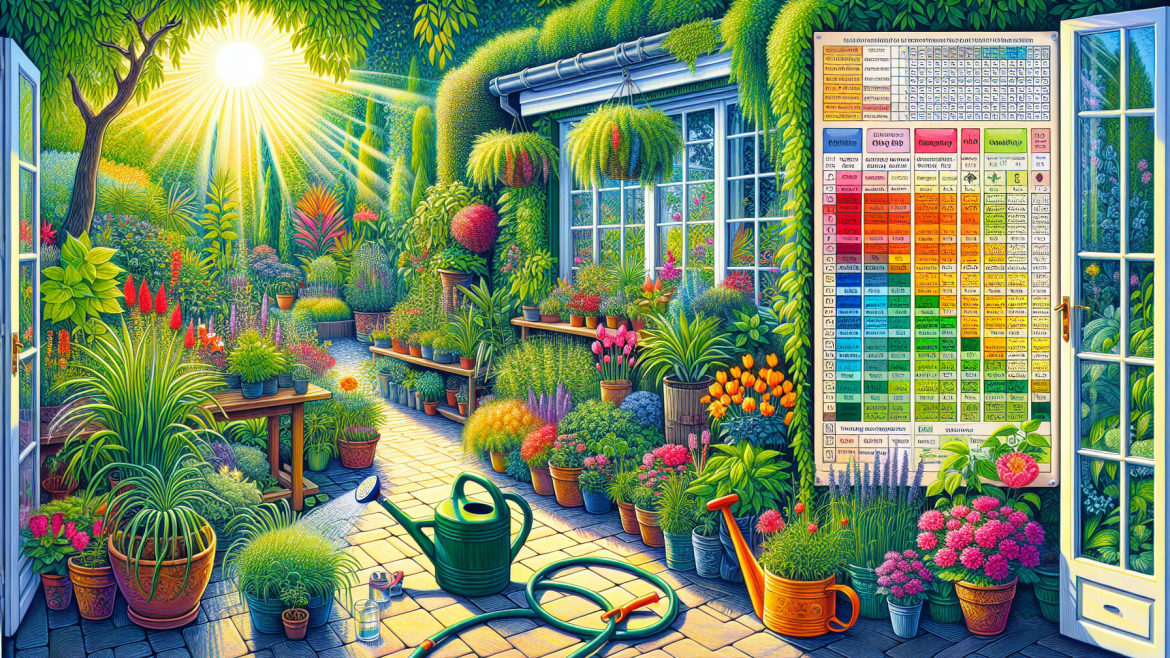Watering your garden efficiently is crucial for maintaining plant health and ensuring vigorous growth. Too much water can lead to root rot, while too little can cause plants to wither. Crafting a perfectly balanced watering schedule involves understanding your garden’s specific needs, including plant types, soil conditions, and climate. This guide will help you develop an effective watering schedule to keep your garden thriving.
Understand Your Plants’ Needs
Different plants have varying water requirements. For instance, succulents and cacti require less frequent watering compared to vegetables or flowers. When planning your watering schedule, consider the following:
- Native Plants: Plants native to your area are usually adapted to local rainfall patterns and may need less supplemental watering.
- Vegetable Gardens: Vegetables need more consistent moisture, especially during flowering and fruiting stages.
- Flowering Plants: Many flowers require consistent moisture to produce blooms, but it’s essential to research each specific plant.
- Lawns: Grass typically needs around 1 to 1.5 inches of water per week, either from rain or irrigation.
Evaluate Your Soil Type
Soil type significantly influences how often and how much you need to water. There are three primary soil types:
- Sandy Soil: Drains quickly, requiring more frequent watering but less water per session.
- Clay Soil: Retains water longer, needing less frequent watering but ensuring the soil doesn’t become waterlogged.
- Loam Soil: Ideal for most plants, loam retains moisture well while allowing excess water to drain.
Testing your garden soil can provide insights into its composition and permeability, helping you tailor your watering schedule effectively.
Consider Local Climate and Weather Conditions
Climate plays a crucial role in determining your garden’s watering needs. Areas with hot, dry climates will require more frequent watering, while regions with regular rainfall may need less. Monitor weather forecasts regularly to adjust your watering schedule accordingly. For instance, if rain is expected, you can skip a watering session to prevent overwatering.
Best Time to Water Your Garden
The timing of watering can impact water efficiency and plant health. Here’s when to water for optimal results:
- Early Morning: Watering early allows plants to absorb moisture before the heat of the day, reducing evaporation.
- Late Afternoon: If morning watering isn’t possible, late afternoon is the next best option. Ensure plants have enough time to dry before nightfall to prevent fungal diseases.
Watering Techniques
Employing the right watering techniques can enhance the effectiveness of your schedule:
- Drip Irrigation: Delivers water directly to the plant base, reducing evaporation and runoff.
- Soaker Hoses: Lay directly on the soil, allowing water to seep slowly and uniformly.
- Mulching: Applying mulch around plants helps retain soil moisture and reduce the frequency of watering.
- Hand Watering: For smaller gardens or potted plants, hand watering ensures precise control over water distribution.
Monitor and Adjust Your Schedule
An effective watering schedule isn’t static. Regularly monitor your garden’s health and soil moisture levels, and be ready to adjust as needed. Signs like wilting, yellowing leaves, or overly dry soil indicate a need for schedule modifications. Tools such as soil moisture meters can provide accurate assessments of soil hydration levels.
Conclusion
Creating an effective watering schedule for your garden involves understanding the specific needs of your plants, soil, and local climate. By watering during optimal times and employing efficient techniques, you can ensure your garden receives the perfect amount of hydration. Regular monitoring and adjustments will maintain the health and beauty of your garden throughout the growing season.
